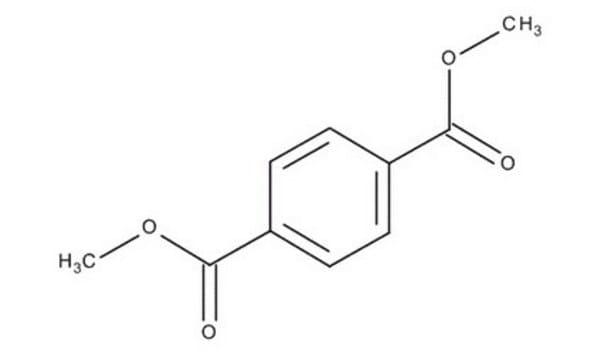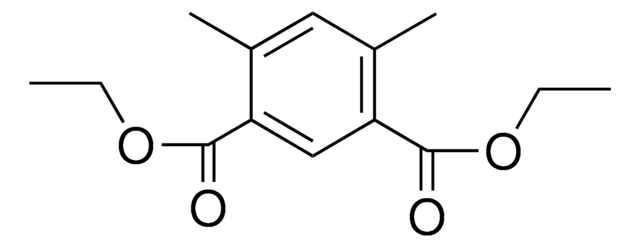44291
Dimethyl isophthalate
analytical standard
About This Item
Polecane produkty
klasa czystości
analytical standard
Poziom jakości
gęstość pary
6.8 (vs air)
ciśnienie pary
93.7 mmHg ( 208 °C)
Próba
≥98.5% (GC)
okres trwałości
limited shelf life, expiry date on the label
metody
HPLC: suitable
gas chromatography (GC): suitable
mp
64-68 °C (lit.)
Zastosowanie
cleaning products
cosmetics
environmental
food and beverages
personal care
format
neat
ciąg SMILES
COC(=O)c1cccc(c1)C(=O)OC
InChI
1S/C10H10O4/c1-13-9(11)7-4-3-5-8(6-7)10(12)14-2/h3-6H,1-2H3
Klucz InChI
VNGOYPQMJFJDLV-UHFFFAOYSA-N
Szukasz podobnych produktów? Odwiedź Przewodnik dotyczący porównywania produktów
Opis ogólny
Zastosowanie
Hasło ostrzegawcze
Warning
Zwroty wskazujące rodzaj zagrożenia
Zwroty wskazujące środki ostrożności
Klasyfikacja zagrożeń
Eye Irrit. 2
Kod klasy składowania
11 - Combustible Solids
Klasa zagrożenia wodnego (WGK)
WGK 1
Temperatura zapłonu (°F)
343.4 °F - closed cup
Temperatura zapłonu (°C)
173 °C - closed cup
Choose from one of the most recent versions:
Masz już ten produkt?
Dokumenty związane z niedawno zakupionymi produktami zostały zamieszczone w Bibliotece dokumentów.
Nasz zespół naukowców ma doświadczenie we wszystkich obszarach badań, w tym w naukach przyrodniczych, materiałoznawstwie, syntezie chemicznej, chromatografii, analityce i wielu innych dziedzinach.
Skontaktuj się z zespołem ds. pomocy technicznej









